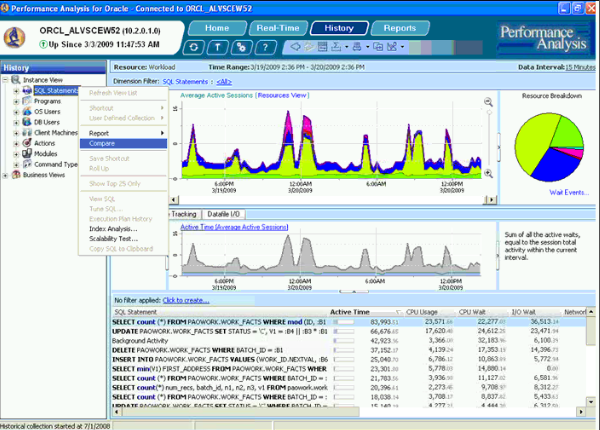How to Monitor Database Performance in Oracle
Ensuring optimal performance of your Oracle database is crucial to the overall efficiency of your organization’s operations. Monitoring key performance metrics can help you identify and address any potential issues before they escalate and impact your system’s performance. In this article, we will discuss some tips and best practices for monitoring database performance in Oracle.
1. Use Oracle Enterprise Manager (OEM)
Oracle Enterprise Manager (OEM) is a comprehensive management tool that provides a centralized dashboard for monitoring and managing your Oracle database. OEM allows you to monitor various performance metrics, such as CPU usage, memory usage, I/O operations, and more. It also offers features for diagnosing and resolving performance issues quickly.
2. Monitor SQL Statements
Monitoring SQL statements is essential for optimizing database performance. Oracle provides tools such as SQL Tuning Advisor and SQL Access Advisor to help you identify inefficient queries and optimize them for better performance. By monitoring and tuning SQL statements, you can improve overall system performance and efficiency.
3. Monitor Wait Events
Wait events are indicators of performance bottlenecks in your Oracle database. Monitoring wait events can help you identify resource-intensive operations that are causing delays in the system. By addressing these wait events, you can improve the overall performance of your database and enhance user experience.
4. Set Up Alerts and Notifications
Setting up alerts and notifications for critical database performance metrics is essential for proactive monitoring. Oracle offers features for setting up custom alerts based on specific thresholds and conditions. By configuring alerts, you can be notified of potential performance issues and take corrective actions promptly.
5. Monitor System Resources
Monitoring system resources such as CPU, memory, and disk usage is crucial for maintaining optimal performance of your Oracle database. By tracking resource utilization, you can identify any bottlenecks or excessive load on the system and take necessary actions to optimize performance. Regularly monitoring system resources can help you ensure the stability and efficiency of your database.
6. Conduct Regular Performance Tuning
Regular performance tuning is essential for maintaining the long-term performance and stability of your Oracle database. Conducting performance tuning activities, such as index rebuilding, statistics gathering, and query optimization, can help enhance the overall performance of your database. By proactively tuning your system, you can ensure smooth operations and optimal performance.
7. Utilize AWR Reports
Oracle Automatic Workload Repository (AWR) reports provide detailed information about system performance and resource usage over time. By analyzing AWR reports, you can identify trends, anomalies, and performance bottlenecks in your database. Utilizing AWR reports can help you make informed decisions about system optimization and performance enhancement strategies.
8. Monitor Database Security
Database security is essential for ensuring the confidentiality, integrity, and availability of your data. Monitoring database security settings, user privileges, and access controls is crucial for preventing unauthorized access and data breaches. By regularly monitoring database security, you can ensure the protection of sensitive information and maintain the overall integrity of your Oracle database.
Conclusion
Monitoring database performance in Oracle is a critical task that requires continuous attention and proactive measures. By following the tips and best practices outlined in this article, you can effectively monitor and optimize the performance of your Oracle database, ensuring smooth and efficient operations for your organization.
